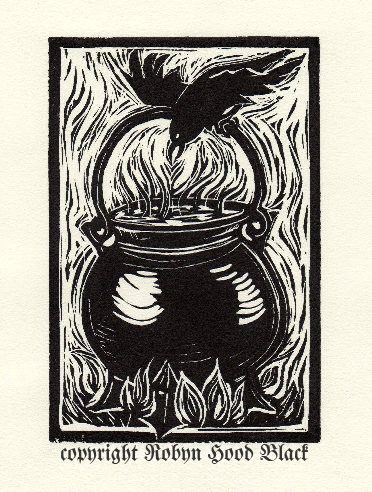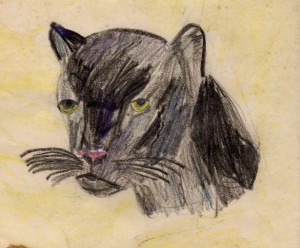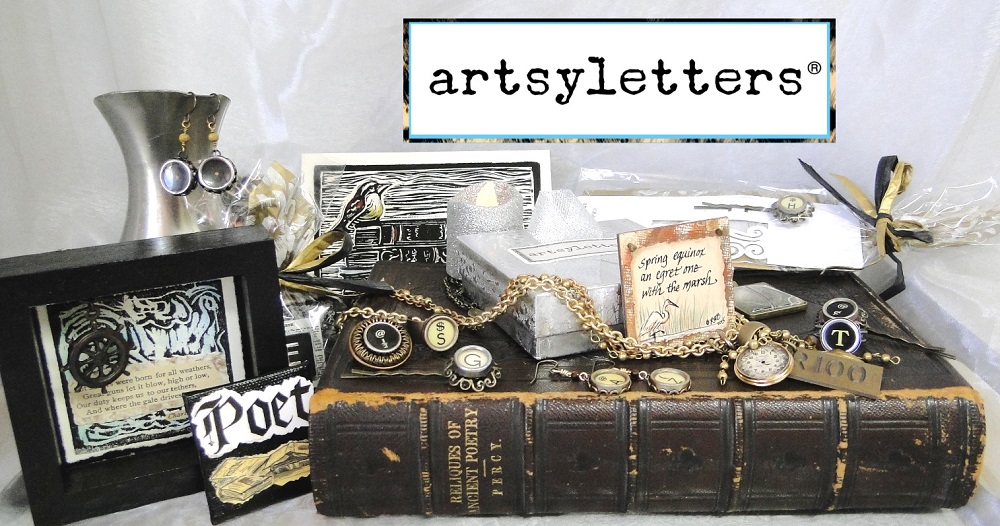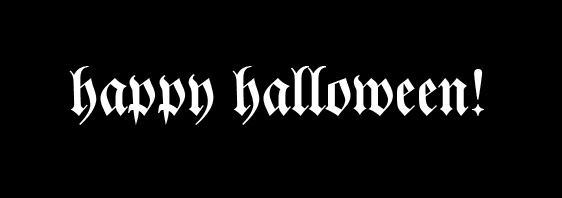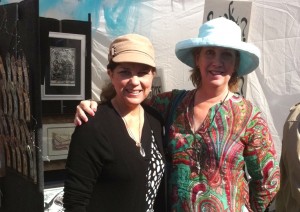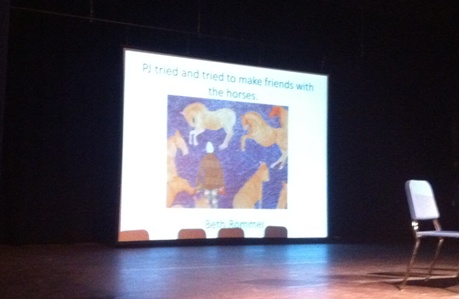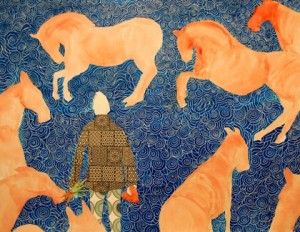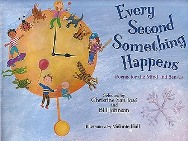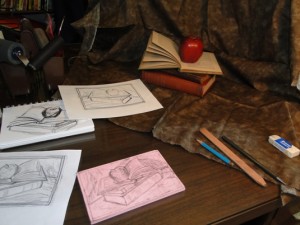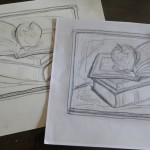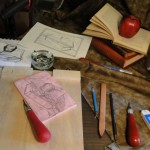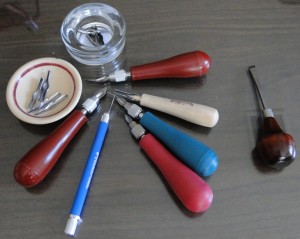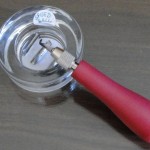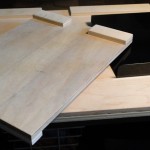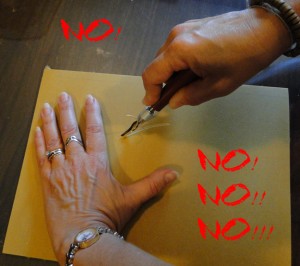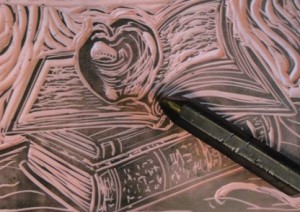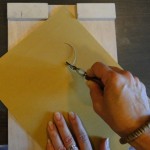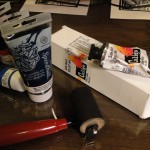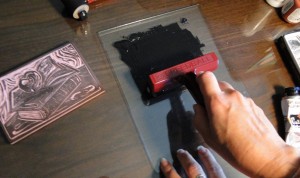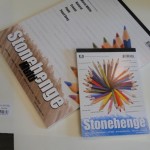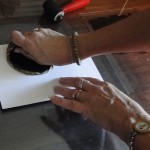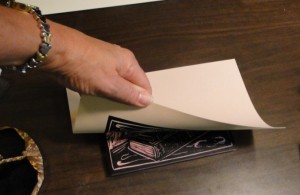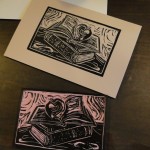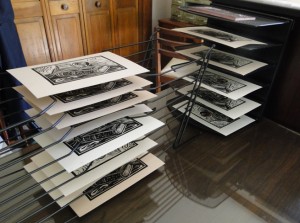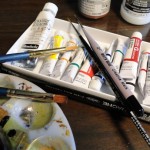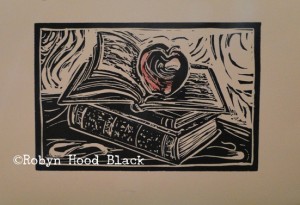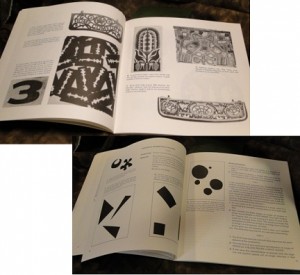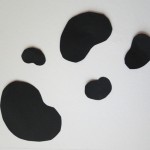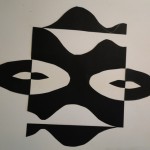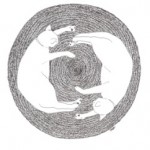**First, congratulations to Jo, whose name was randomly picked from last week’s commenters to receive a pack of notecards.** :0)
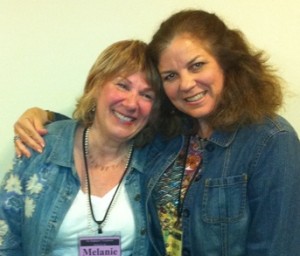
Melanie Hall and yours truly at a Highlights Founders Workshop, May 2012
Today we have a lively treat. Melanie Hall is an artist, illustrator and teacher from New York’s Hudson River Valley. Her 25 children’s books have garnered many awards including the Parents’ Choice Award for an outstanding picture book and the Sydney Taylor Notable Book for 2011, as well as favorable reviews from the New York Times Book Review. Her work, often described as sophisticated and whimsical, has been exhibited at the Original Art Show at the Society of Illustrators (NY) and in many galleries. She teaches graduate courses in children’s book illustration at Marywood University in Scranton, Pennsylvania, as well as professional workshops.
I met Melanie at the 2011 Highlights Founders Workshop for Advanced Illustrators at Boyds Mills, Pennsylvania, led by an esteemed team of amazing illustrators: Melanie, Lindsay Barrett George, Eric Rohman, Floyd Cooper, and Suzanne Bloom.
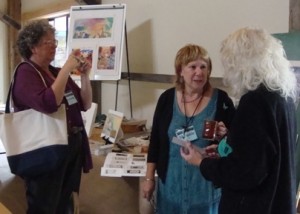
Suzanne Bloom taking pictures as Melanie Hall and Lindsay Barrett George chat at the 2011 Highlights Founders Advanced Illustrators Workshop
The Highlights workshops are tremendous. Little cabins to create and relax in are heavenly, and the new “Barn” is a terrific facility for group gatherings. The natural setting is rejuvenating. But the best thing about these workshops is the faculty. I cornered Melanie toward the end of the workshop to discuss her poetry book projects, since poetry is my first love and I’d love to illustrate my own poems. She kindly looked at my work and offered helpful insights. What struck me most about Melanie was not just her expertise and her ability to articulate concepts, but the joy that emanates from her work and her person. She looked at a couple of pieces I’d made and said, “You had fun creating that, didn’t you?” She challenged us to make the kind of work we took joy in, which reflected our personalities.
One of my favorite books Melanie has illustrated is EVERY SECOND SOMETHING HAPPENS – POEMS FOR THE MIND AND SENSES (selected by Christine San José and Bill Johnson.)  I had the good fortune to meet Bill Johnson at the Highlights Founders “Poetry for All” workshop this past May. Melanie was a guest presenter there, and it was wonderful to catch up with her and hear about her process of illustrating poetry. Her collages, paintings, and drawings reflect the variety of voices in EVERY SECOND…, which includes the work of renowned poets and also poems from children. (See my blog post for more about the book.) And, drumroll…. I’m offering a copy to one lucky commenter randomly selected this week! (See details below.)
I had the good fortune to meet Bill Johnson at the Highlights Founders “Poetry for All” workshop this past May. Melanie was a guest presenter there, and it was wonderful to catch up with her and hear about her process of illustrating poetry. Her collages, paintings, and drawings reflect the variety of voices in EVERY SECOND…, which includes the work of renowned poets and also poems from children. (See my blog post for more about the book.) And, drumroll…. I’m offering a copy to one lucky commenter randomly selected this week! (See details below.)
Melanie kindly offered to drop by here today and answer a few questions about herself and her art.
Welcome, Melanie! Tell us a little bit about your background. Were you one of those kids who doodled your way through class?
Yup. The girls asked me to draw horses for them in grade school. No one else could figure out how to draw them. They thought it was cool the way the images just came out of my pencil. I did, too.

“Fireworks” – ©Melanie Hall, HIGHLIGHTS magazine illustration
How and when did you decide to pursue art as a career?
When I was a senior in high school, I decided to go to art school. Dad was not happy. He said I would “starve in a garret.” He was very proud of me when I became an editorial illustrator and did annual reports and magazine and newspaper illustrations.
What is it about mixed media that you particularly enjoy?
I love being surprised how things turn out. It’s not always what I intended, because the right side of the brain is a genius , and if I just get out of the way, my images become inventive, freer, exciting and filled with spirit.

©Melanie Hall – Clock Doll, assemblage
You wear many hats berets – artist, illustrator, teacher. How do you balance the different requirements for each of these pursuits? (Do you need time away from people in order to create, or do you need to get away from the studio to be with other people?)
Great question. I have to carve up my time to pursue all my interests. Sometimes it means that I work on several different projects in one day: in the morning I’ll do one thing, and then after lunch I’ll do something else, and then at the end of the day I’ll reward myself with personal art.
I used to think it was nutty of me, but I realized it works for me!
In my notes from one of your workshops , I wrote that you said, “What turns my buttons on is to play.” How do you free yourself to play when approaching a new work?
I arrange some of my favorite pieces of artwork near my drawing table to look at while I’m working so I can get back into that frame of mind.
I also love to look at the masters of both fine art and illustration. For instance, I’ll look at a book of Toulouse Lautrec’s posters or a Martin and Alice Provensen picturebook.
So I guess it’s visual inspiration that gets me going.
Do you have favorite sources of inspiration?
From time to time, I need to spend the day at a museum to feast my eyes and breathe in that incredible atmosphere; the Metropolitan is one of my favorites. That’s where you’ll find me every year on my birthday to celebrate life.

©Melanie Hall – “Hen Party,” mixed media on board
What are the tools you can’t live without – the items you use over and over again in your studio?
My electric eraser, my“Black Warrior” pencil, and Arches 140 lb. hot press watercolor paper with the wonderful deckled edge.
(I love that deckled edge, too!) Looking ahead, are there any works-in-progress or plans floating out there you’d like to share with us?
Yes, I am writing and illustrating a picture book. I’m on Revision # 6. Each version is better than the one that came before.
Thank you for playing along, Melanie!
Visit Melanie at her website and her Etsy shop.
To read more about the Highlights Illustrators workshop from last year, here’s my blog post about it.
To be entered to win a copy of EVERY SECOND SOMETHING HAPPENS, please leave a comment below by midnight EST Monday, Oct. 22. Do you have a favorite way to “play” to free up your creative side? One lucky art lover will be randomly selected and notified next week.
